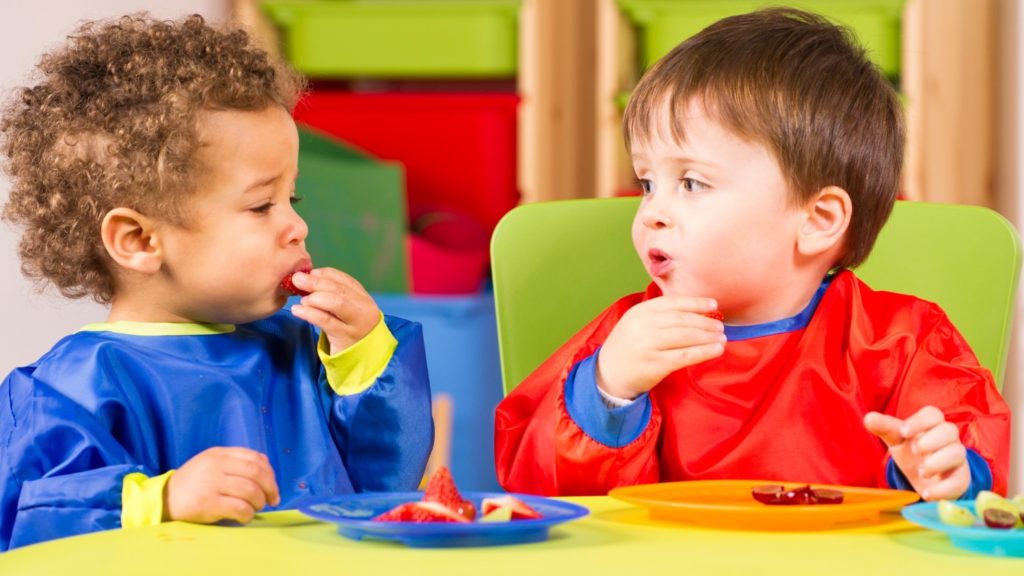How to encourage healthy eating in toddlers and preschoolers, even the “picky eaters”
Many young children are picky eaters who prefer to eat simple, familiar foods—perhaps at home and in child care. They may refuse foods based on color or texture, or play at the table and not want to eat.

While picky eating is common in ages 2-5, this is also an important time that shapes lifelong eating habits. Try responding to picky eating behavior in a positive way to help children move through this temporary phase with healthy attitudes and a hunger for variety. These tips can help:
Serve wisely
- Introduce only one new food at a time. Serve a well-loved food along with the new food.
- Put a small portion of the new food on children’s plates so it doesn’t feel overwhelming.
- Transition to new foods or ingredients slowly. Instead of going directly from whole milk to fat-free, serve 2% for a few weeks, then 1% before finally arriving at fat-free milk. Mix plain yogurt with fruit-sweetened varieties, then add fresh fruit, until kids become accustomed to a full serving of plain yogurt and fresh fruit.

Get everyone involved
- Involve children in preparing meals and snacks. Let them pick out fruits and veggies at the store, or add ingredients, scrub veggies, or stir food when cooking.
- Encourage everyone at the table—including adults—to taste every food that is served. Let them know they don’t have to eat all of it if they don’t like it. They can just “try it.”
Talk about it
- Teach children where the food they’re eating comes from, how it is made or grown. Talk about the food with children during mealtime.
- Always offer praise and encouragement when kids try new foods.
- Offer choices. Don’t ask a yes or no question like, “Do you want broccoli for dinner?” Instead, ask, “Which would you like for dinner—broccoli or cauliflower?”
- Be patient. Kids don’t always take to new foods right away, so offer it again on other days. It may take up to a dozen tries for a child to accept a new food.
Make food fun
- Cut a new food into fun and easy shapes with cookie cutters.
- Place small batches of mixed chopped fruit in small cups or ice cube trays, add a stick and freeze for a popsicle-inspired treat.
- Name a food that a child helps create. Make a big deal of serving “Maria’s salad” or “Peter’s Sweet Potatoes.”
- Talk about fun and happy things while you’re eating together. If children associate arguments or negativity with meals, they may develop unhealthy attitudes toward food.

Remember, children learn from watching the adults around them. Eat a variety of fruits and vegetables in front of children, and they’ll develop a taste for them, too.
Content adapted from USDA’s “Healthy Tips for Picky Eaters” and Nemours’ “Tips for Transitioning Kids to Healthier Foods.”
Want more healthy eating tips?
Get vetted, evidence-based resources to support your efforts to help children and families get healthy. Visit our Resource Hub and customize your search by topic, audience, and/or keywords. GET RESOURCES
Topics: Child Care, Healthy Eating
Subscribe for more
Want more ideas for healthy schools, workplaces, child care providers, and families? Subscribe to our blog for weekly tips delivered right to your inbox!
5 Tips for a successful employee wellness program NEXT »
Employee wellness program idea: stock a healthy break room
